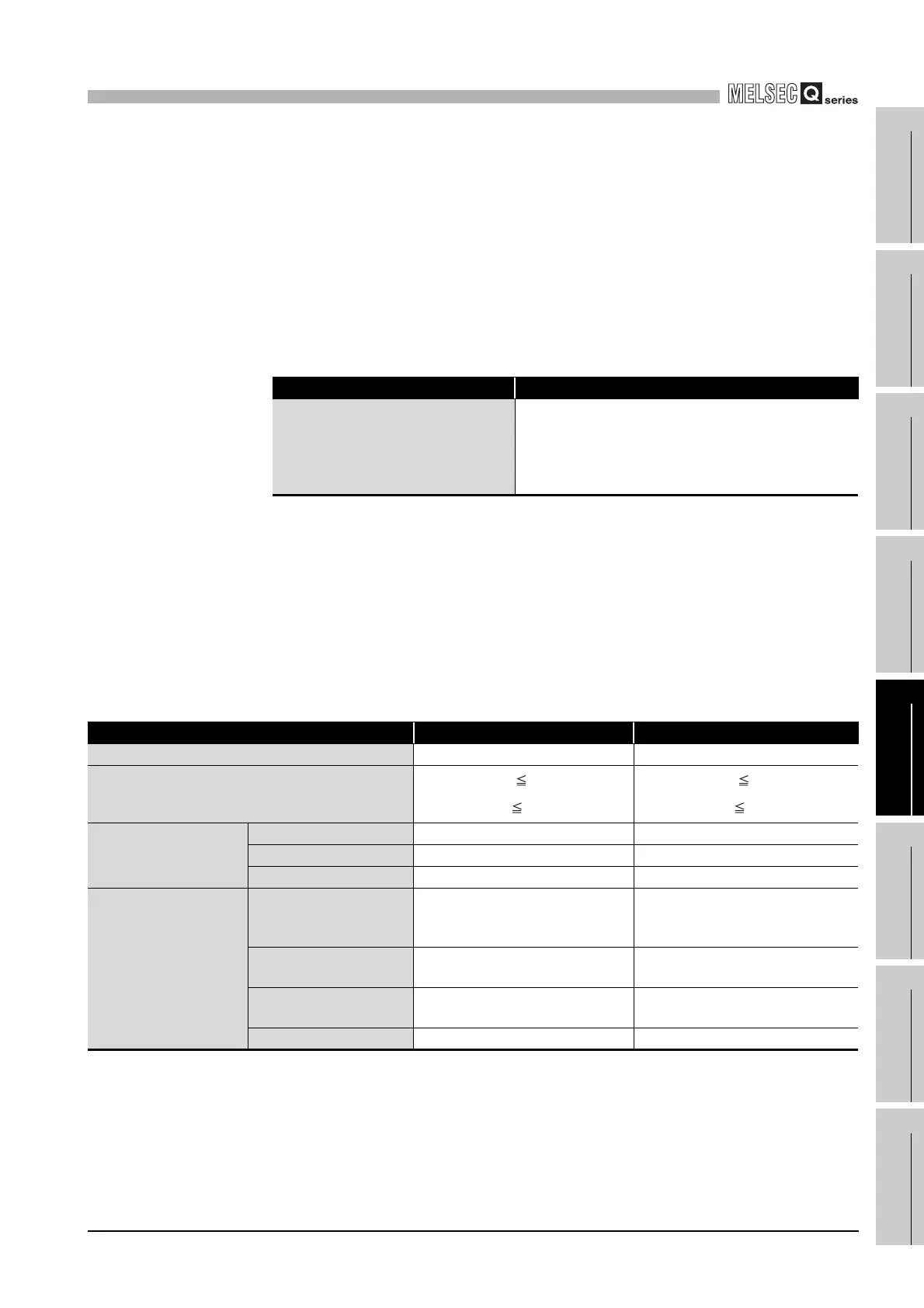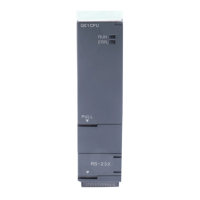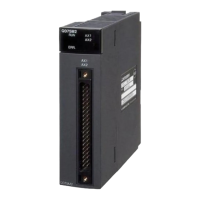APPENDICES
Appendix 5 Method of replacing High Performance model QCPU with Universal model QCPU
App - 142
9
Parameters
10
Device Explanation
11
CPU Module Processing
Time
12
Procedure for Writing
Program to CPU ModuleAppendicesIndex
(3) Advantages and disadvantages when using the double-precision
floating-point data of the Universal model QCPU
TableApp.73 shows the advantages and disadvantages when performing the double-
precision floating-point operation instructions in the Universal model QCPU.
If higher accuracy is required in floating-point operations, it is recommended to
replace the instructions with the double-precision floating-point operation instructions.
* 1: The processing speed of the double-precision floating-point operation instructions in the Universal
model QCPU is higher than that of floating-point operation instructions using internal double-
precision operations in the High Performance model QCPU.
TableApp.74 shows the comparison between single-precision and double precision
floating-point data.
TableApp.73 Advantages and disadvantages when using the double-precision floating-point
operation instructions
Advantage Disadvantage
The results are more accurate than those
of the single-precision floating-point
operation instructions.
The instruction processing speed is slower than that of the
single-precision floating-point operation instructions. *1
Double-precision floating-operation data use twice as many
word device points as single-precision floating-operation
data.
TableApp.74 Comparison between single-precision and double precision floating-point data
Item Single-precision floating-point data Double-precision floating-point data
Word point required for data retention 2 words 4 words
Setting range
-2
128
<N -2
-126
, 0,
2
-126
N<2
128
-2
1024
<N -2
-1022
, 0,
2
-1022
N<2
1024
Precision (number of bits)
Mantissa part 23 bits 52 bits
Exponent part 8 bits 11 bits
Sign part 1 bits 1 bits
Instruction processing
speed (Q04UDHCPU/
Q06UDHCPU)(Maximum)
Data comparison
(Conductive status)(LDE>= /
LDED>=)
5.5
µs 9.0 µs
Data transfer(EMOV/
EDMOV)
0.019
µs 5.0 µs
Addition (3 devices)(E+ /
ED+)
0.0665
µs 9.2 µs
SIN operation(SIN/SIND) 5.7 µs 13.8 µs

